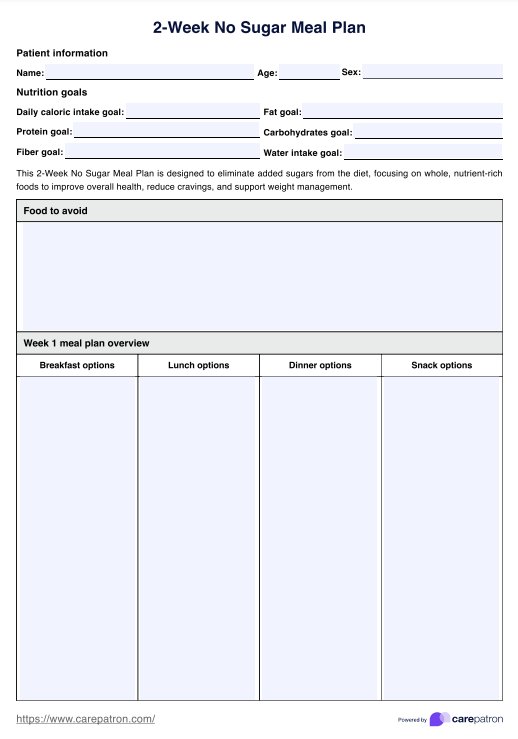Foods low or zero in sugar include most vegetables, lean proteins like chicken and fish, nuts and seeds, and whole grains. These foods are central to a no-sugar diet plan.

2 Week No Sugar Meal Plan
Embrace a healthier lifestyle with our 2-Week No Sugar Meal Plan, designed for those looking to reduce sugar intake and improve overall well-being.
Use Template
2 Week No Sugar Meal Plan Template
Commonly asked questions
Unlike natural sugars found in fruits and dairy products, added sugars are added to foods during processing or preparation. Added sugars contribute extra calories without nutritional benefits.
Sugar withdrawal symptoms can include headaches, fatigue, cravings, mood swings, and irritability. These symptoms usually diminish within a few days to a week.
EHR and practice management software
Get started for free
*No credit card required
Free
$0/usd
Unlimited clients
Telehealth
1GB of storage
Client portal text
Automated billing and online payments











